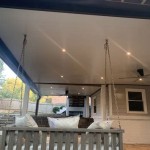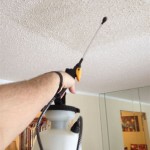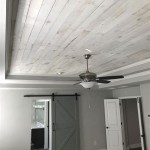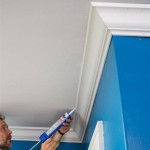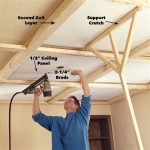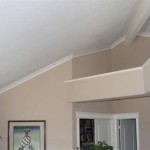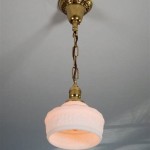Are Nail Pops in Ceilings Dangerous? Understanding Potential Risks and Solutions
Nail pops in ceilings, those small, unsightly blemishes that protrude from drywall surfaces, are a common occurrence in both new and older homes. While they may appear to be merely cosmetic imperfections, questions often arise regarding their potential danger. This article will explore the causes of nail pops, assess the potential risks they pose, and outline common solutions for addressing them. The information presented aims to provide a comprehensive understanding of the issue, particularly in the context of homeowner concerns often discussed on platforms like Reddit, where diverse opinions and experiences are shared.
The presence of nail pops in ceilings is generally not indicative of an immediate, catastrophic structural failure. However, they can signal underlying issues that, if ignored, may lead to more significant problems over time. The danger associated with nail pops is often indirect, stemming from the reasons behind their formation and the gradual degradation of the ceiling's integrity. This understanding is crucial for homeowners to make informed decisions about addressing these types of issues.
Understanding the Causes of Nail Pops
Several factors contribute to the appearance of nail pops in ceilings. The most common cause is the natural settling of a house. As the structure ages, the wood framing members (joists and studs) dry out and shrink. This shrinkage, albeit subtle, can cause the nails or screws that secure the drywall to lose their grip. Consequently, the fastener head pushes outward, breaking through the drywall compound and paint, creating the characteristic "pop."
Another significant cause is improper installation. If nails are overdriven during the initial drywall installation, they can weaken the gypsum board around the fastener. Over time, even minor movement or vibration can cause the weakened area to fail, resulting in a pop. Similarly, using the wrong type or size of fastener can contribute to the problem. Nails designed for wood framing may not adequately grip metal studs, and vice-versa. Inadequate spacing between fasteners can also overload individual nails, increasing the likelihood of failure.
Moisture fluctuations also play a role. Changes in humidity levels can cause the wood framing to expand and contract. This movement puts stress on the drywall fasteners, potentially causing them to loosen or break through the surface. Leaks from the roof or plumbing can exacerbate the problem, saturating the drywall and weakening its structure. In these cases, nail pops may be accompanied by water stains or sagging, indicating a more serious issue.
Vibrations, whether from traffic, construction activity, or even heavy footsteps, can also contribute to nail pops. Repeated vibrations can gradually loosen fasteners and weaken the surrounding drywall. This is particularly common in houses located near busy roads or railways.
Finally, insufficient adhesive can contribute. Drywall is often installed with a combination of fasteners and adhesive. The adhesive provides an additional layer of security and helps to distribute the load across a larger area. If the adhesive is improperly applied or has deteriorated over time, the fasteners will bear a greater load, increasing the risk of pops.
Potential Risks Associated with Nail Pops
While nail pops themselves are not inherently dangerous, they can indicate underlying problems that pose potential risks. One of the main risks is the potential for further drywall damage. If nail pops are left unaddressed, the surrounding drywall can become weakened and begin to crack or crumble. This can lead to larger areas of damage that require more extensive repairs.
A more serious risk is the potential for structural issues. While nail pops are usually related to the settling of a home, they can, in some cases, indicate more significant structural problems, such as sagging joists or foundation movement. If multiple nail pops appear in a concentrated area, or if they are accompanied by other signs of structural distress, such as cracks in walls or doors that are difficult to open or close, it is essential to consult with a structural engineer.
Another potential risk is related to moisture. If nail pops are caused by a leak, ignoring the problem can lead to mold growth. Mold can cause respiratory problems and other health issues. It can also damage the structure of the house. If nail pops are accompanied by water stains or a musty odor, it is crucial to identify and repair the leak and address any mold growth.
Moreover, nail pops can detract from the aesthetic appeal of a home. While this is not a direct safety risk, it can affect the value of the property and create an unfavorable impression. Addressing nail pops is often a necessary step in preparing a house for sale.
Finally, there is a minor risk of injury. Protruding nail heads can present a hazard, particularly if they are sharp or rusty. While the risk is relatively low, it is advisable to address nail pops, especially in areas where they are likely to be bumped or brushed against.
Common Solutions for Addressing Nail Pops
The appropriate solution for addressing nail pops depends on the underlying cause and the extent of the damage. In most cases, the repair process involves resetting the nail, adding additional fasteners, and patching the damaged area.
The first step is to properly reset the nail or screw. Ideally, a screw is preferred over a nail for repair work because it provides greater holding power. The existing nail should be hammered back into the framing member, slightly below the surface of the drywall. Care should be taken not to overdrive the nail, as this can further weaken the surrounding drywall. If the nail is bent or damaged, it should be removed and replaced with a new screw.
Next, additional fasteners should be added near the existing pop. The fasteners should be placed a few inches away from the original nail or screw. This will help to distribute the load and prevent future pops. Drywall screws are typically used for this purpose, as they are designed to grip both the drywall and the framing member securely. Ensure that the screws are driven in straight and to the correct depth. The screw head should be slightly recessed below the surface of the drywall, but not so deep that it tears the paper facing.
Once the fasteners have been reset and additional screws added, the damaged area needs to be patched. The first step is to apply a thin layer of drywall compound (also known as mud) over the recessed fastener heads and surrounding area. The compound should be applied smoothly and evenly, feathering the edges to blend with the existing drywall surface. Allow the compound to dry completely, which typically takes several hours or overnight, depending on humidity and temperature.
After the first coat of compound has dried, sand the area lightly with fine-grit sandpaper or a sanding sponge. This will smooth out any imperfections and prepare the surface for the second coat. Apply a second thin layer of compound, again feathering the edges. Allow the second coat to dry completely, and then sand it smooth.
Finally, prime the patched area with drywall primer and apply a coat of paint that matches the existing ceiling color. This will conceal the repair and create a seamless finish. In some cases, multiple coats of paint may be necessary to achieve a perfect match.
For more extensive damage, such as large cracks or crumbling drywall, a more comprehensive repair may be required. This may involve cutting out the damaged section of drywall and replacing it with a new piece. The new piece of drywall should be carefully measured and cut to fit the opening. It should then be secured to the framing members with drywall screws and taped and mudded to blend with the surrounding surface. This type of repair is more complex and may require the assistance of a professional drywall contractor.
If the nail pops are caused by a leak or other moisture problem, it is essential to address the underlying issue before repairing the drywall. This may involve repairing the roof, fixing a plumbing leak, or improving ventilation. Failure to address the underlying cause will result in the nail pops reappearing.
In cases where the nail pops are indicative of structural issues, it is crucial to consult with a structural engineer. The engineer can assess the structure and recommend appropriate repairs. These repairs may involve reinforcing the framing members or addressing foundation problems. Ignoring structural issues can lead to more significant problems in the future, potentially compromising the safety of the house.
Homeowners should regularly inspect their ceilings for nail pops and other signs of damage. Early detection and repair can prevent minor problems from escalating into more serious issues. A proactive approach to home maintenance can help to preserve the value and safety of the property. Understanding the potential causes and risks associated with nail pops empowers homeowners to make informed decisions about their repair and maintenance strategies.

Drywall Nail Pop In Bathroom Ceiling Home Improvement Stack Exchange

What Are Nail Pops Why Does It Happen And How To Fix

Nails Coming Out From Underneath Ceiling Bunnings Work Community

Why Do Nail Pops Happen In A Ceiling After New Roof Thediyplan

How To Repair Nail Pops And Drywall S Nonprofit Home Inspections

What Is Nail Pop It A Sign Of Foundation Issues In My Home Anchor Repair

Fix Your Ceiling Nail Pops Fast And Easy

What Are Nail Pops Why Does It Happen And How To Fix

What Is Nail Pop It A Sign Of Foundation Issues In My Home Anchor Repair

Nail Pops Roof Shingles Aspec Residential Services Llc
Related Posts

